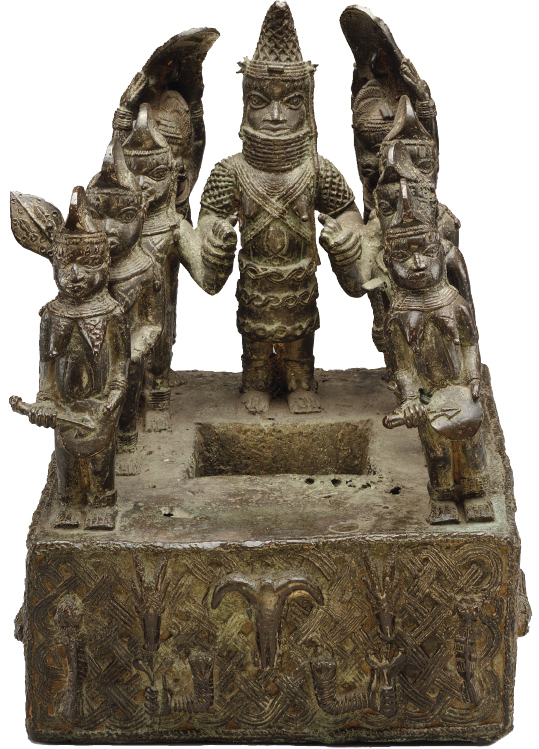A History of World Societies:
Printed Page 593
A History of World Societies Value
Edition: Printed Page 596
The Lives of the People of West Africa
Wives and children were highly desired in African societies because they could clear and cultivate the land and because they brought prestige, social support, and security in old age. The results were intense competition for women, inequality of access to them, an emphasis on male virility and female fertility, and serious tension between male generations. Polygyny was almost universal; as recently as the nineteenth century two-

Men acquired wives in two ways. In some cases, couples simply eloped and began their union. More commonly, a man’s family gave bride wealth to the bride’s family as compensation for losing the fruits of her productive and reproductive abilities. She was expected to produce children, to produce food through her labor, and to pass on the culture in the raising of her children. Because it took time for a young man to acquire the bride wealth, all but the richest men delayed marriage until about age thirty. Women married at about the onset of puberty.
The easy availability of land in Africa reduced the kinds of generational conflict that occurred in western Europe, where land was scarce. Competition for wives between male generations, however, was fierce. On the one hand, myth and folklore stressed respect for the elderly, and the older men in a community imposed their authority over the younger ones through painful initiation rites into adulthood, such as circumcision. On the other hand, in West Africa and elsewhere, societies were not based on rule by elders, as few people lived much beyond forty. Young men possessed the powerful asset of their labor, which could easily be turned into independence where so much land was available.
“Without children you are naked” goes a Yoruba proverb, and children were the primary goal of marriage. Just as a man’s virility determined his honor, so barrenness damaged a woman’s status. A wife’s infidelity was considered a less serious problem than her infertility. A woman might have six widely spaced pregnancies in her fertile years; the universal practice of breast-
Both nuclear and extended families were common in West Africa. Nuclear families averaged only five or six members, but the household of a Big Man (a local man of power) included his wives, married and unmarried sons, unmarried daughters, poor relations, dependents, and scores of children. Extended families were common among the Hausa and Mandinka peoples. On the Gold Coast in the seventeenth century, a well-
In agriculture men did the heavy work of felling trees and clearing the land; women then planted, weeded, and harvested. Between 1000 and 1400, cassava (manioc), bananas, and plantains came to West Africa from Asia. Cassava required little effort to grow and became a staple food, but it had little nutritional value. In the sixteenth century the Portuguese introduced maize (corn), sweet potatoes, and new varieties of yams from the Americas. Fish supplemented the diets of people living near bodies of water. According to former slave Olaudah Equiano, the Ibo people in the mid-
Disease posed perhaps the biggest obstacle to population growth. Malaria, spread by mosquitoes and rampant in West Africa (except in cool, dry Cameroon), was the greatest killer, especially of infants. West Africans developed a relatively high degree of immunity to malaria and other parasitic diseases, including hookworm (which enters the body through shoeless feet and attaches itself to the intestines), yaws (contracted by nonsexual contact and recognized by ulcerating lesions), sleeping sickness (the parasite enters the blood through the bite of the tsetse [SEHT-
The devastating effects of famine, often mentioned in West African oral traditions, represented another major check on population growth. Drought, excessive rain, swarms of locusts, and rural wars that prevented land cultivation all meant later food shortages. In the 1680s famine extended from the Senegambian coast to the Upper Nile, and many people sold themselves into slavery for food. In the eighteenth century “slave exports” reached their peak in times of famine, and ships could fill their cargo holds simply by offering food. The worst disaster occurred from 1738 to 1756, when, according to one chronicler, the poor were reduced literally to cannibalism, also considered a metaphor for the complete collapse of civilization.7
Because the Americas had been isolated from the Eurasian-